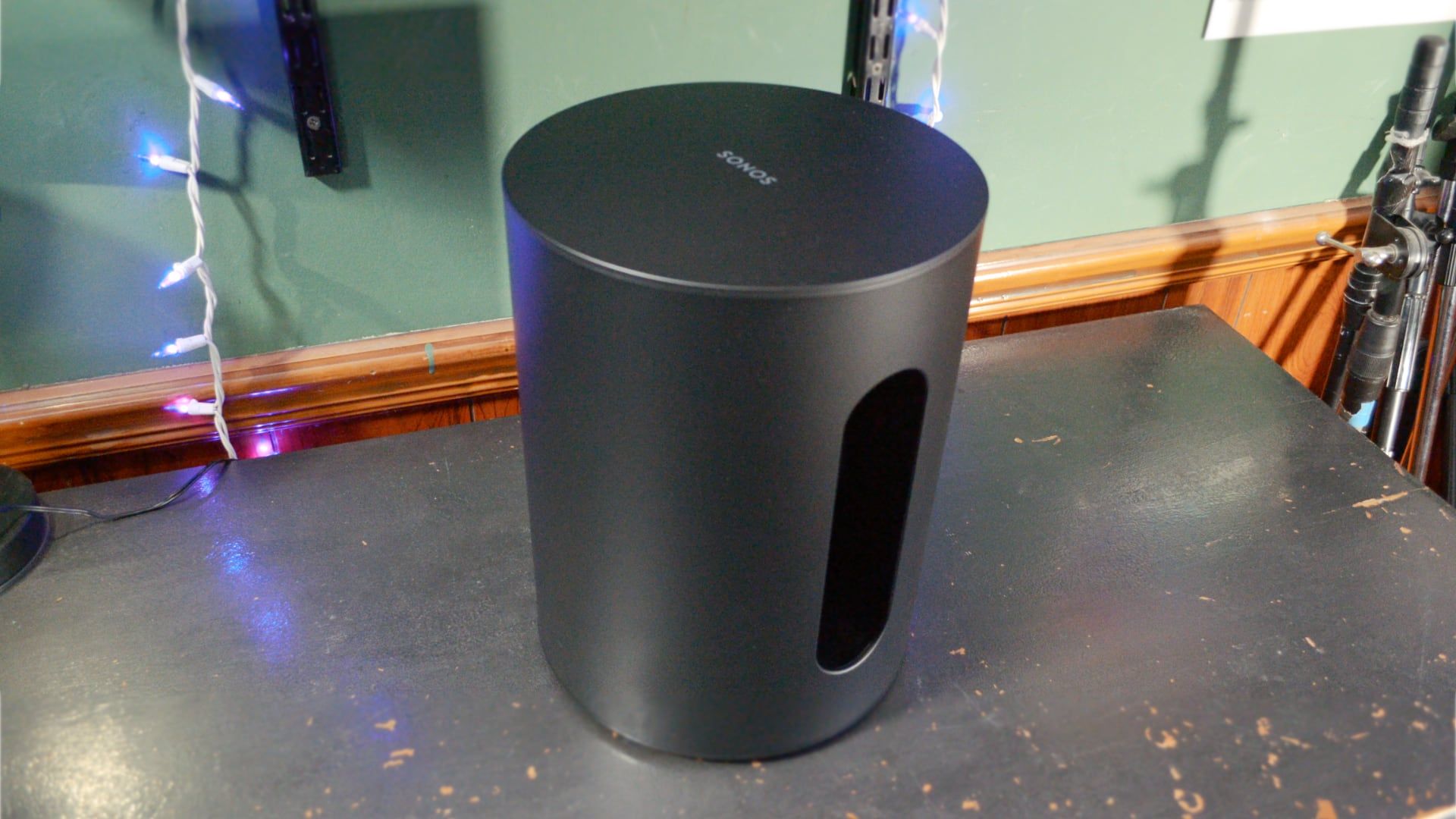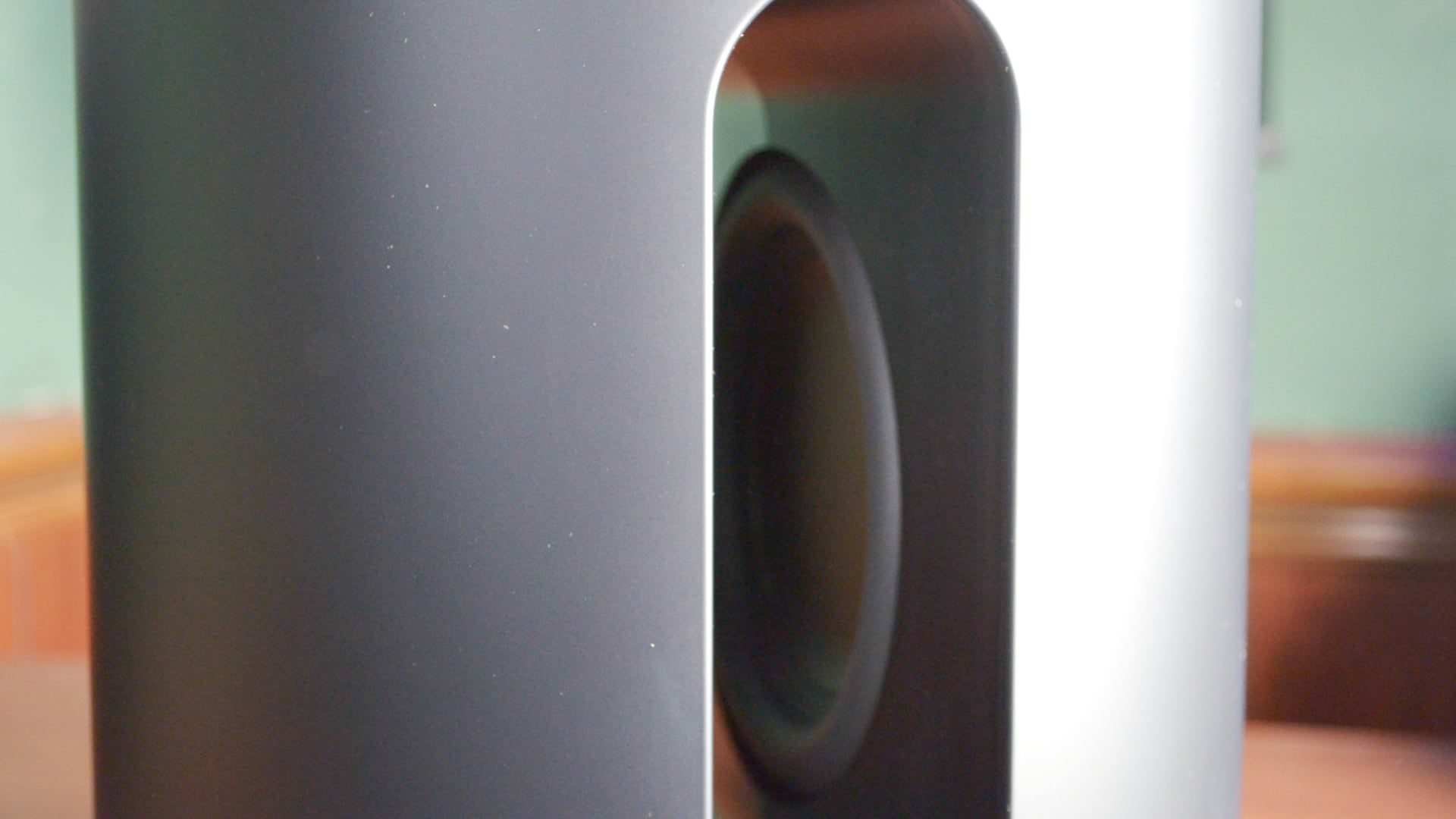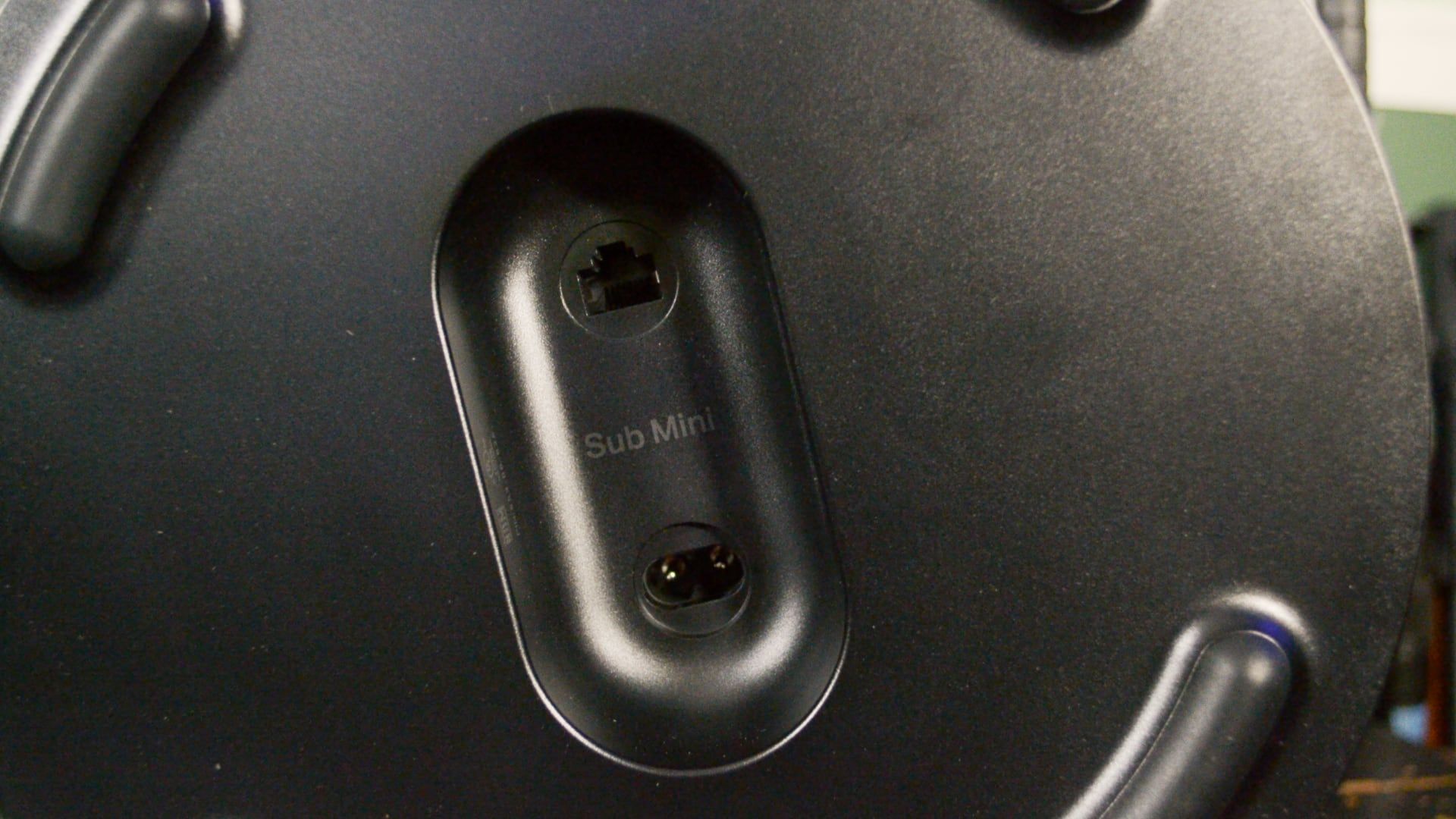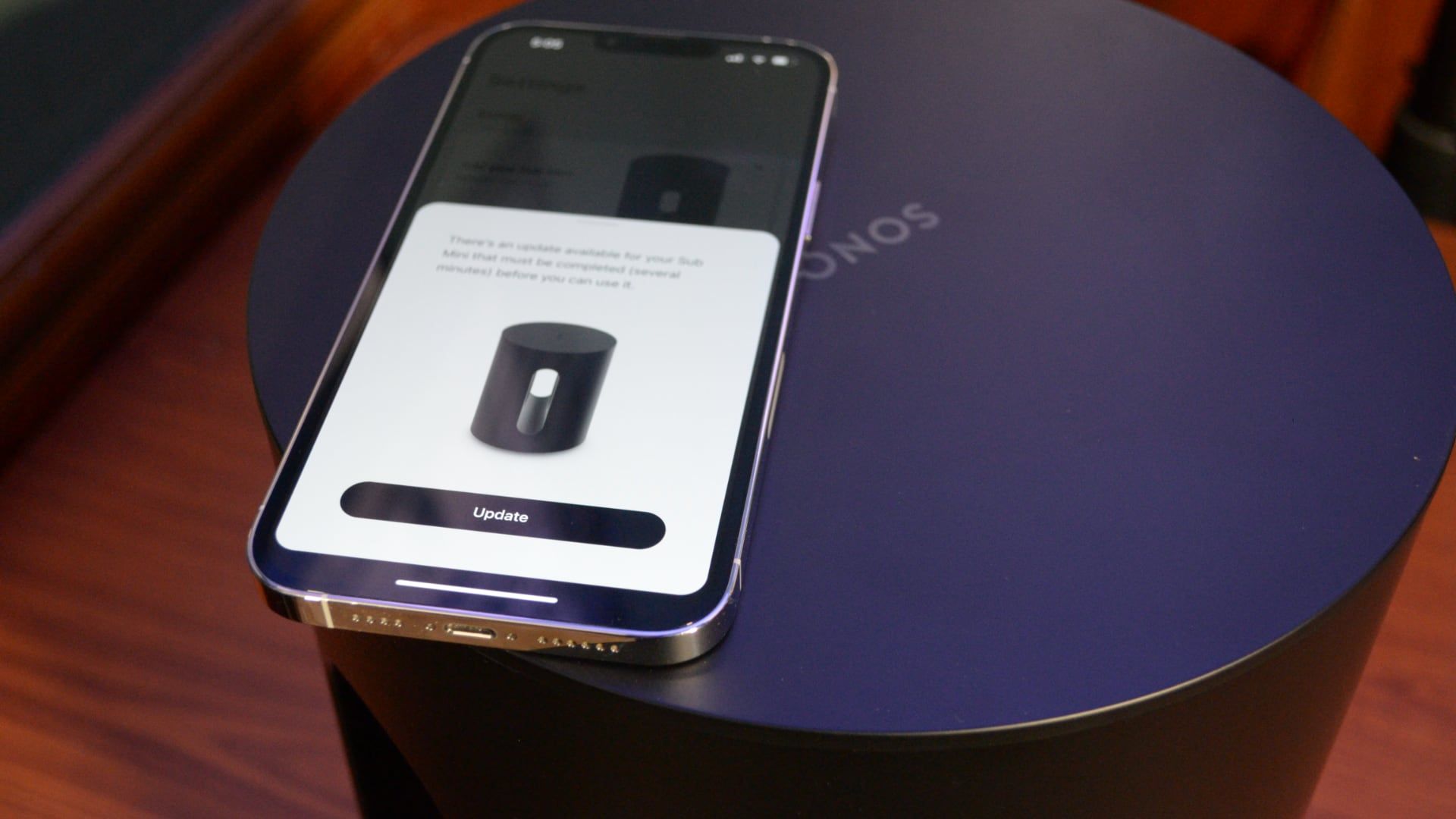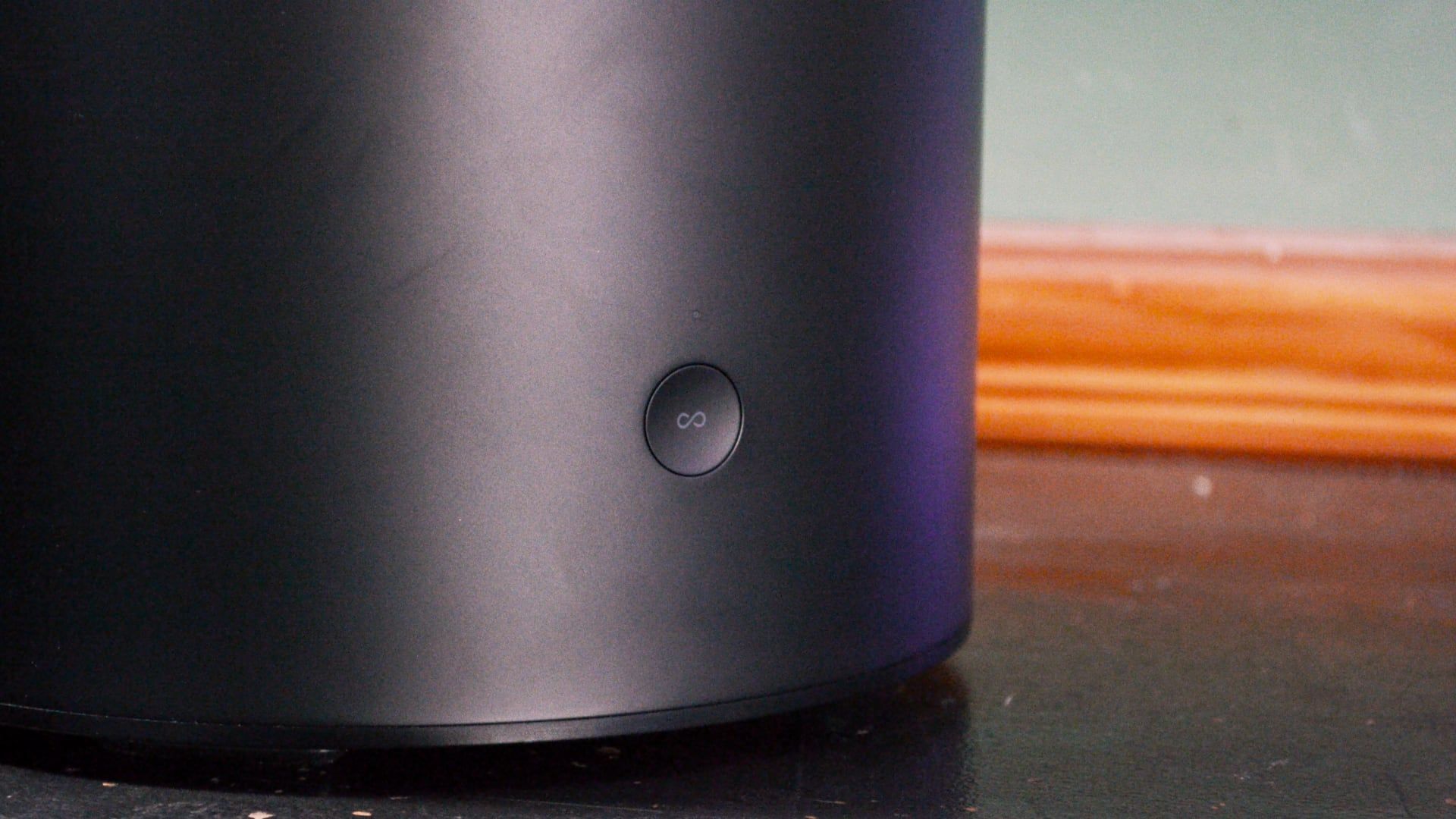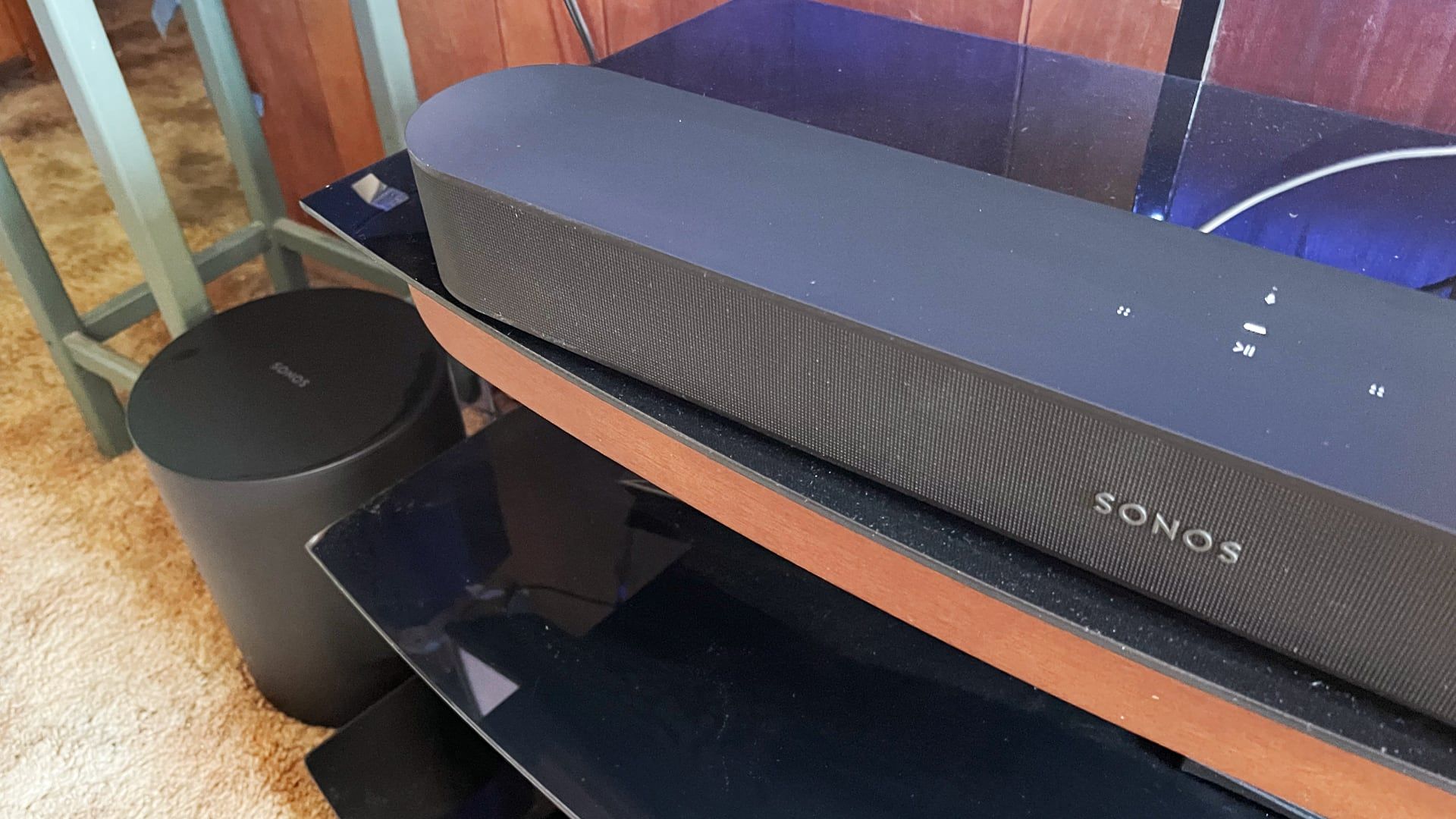Quick Links

If you're serious about your home theater setup, you need a subwoofer. This is a big ask for Sonos owners, as the company's Sub is great but expensive. The Sonos Sub Mini aims to provide that key low-end thump, but with a smaller price and footprint than its larger sibling.
The Sub Mini is a product for a very specific audience, as it's Sonos-only. Whether you're using a soundbar like the Beam Gen 2 or Arc, or you're looking to add more rumble to your whole home audio setup, this subwoofer pairs with most, but not all, Sonos products.
While it's much more affordable than the third-generation Sonos Sub, the Sub Mini is still pricier than most similarly sized soundbars. Is it worth it for Sonos owners, or should you go with the larger subwoofer?
Build and Design
- Height: 305mm (12in)
- Diameter: 230mm (9.1in)
- Weight: 6.35kg (14lb)
- Colors: Black, White
The Sonos Sub Mini is cylindrical in shape, a design far removed from the larger Sonos Sub. It's also not quite as mini as you may imagine from the description. At just over a foot tall and nine inches in diameter, I've certainly seen plenty of smaller subwoofers.
It isn't just the cylindrical shape that separates the Sub Mini from the Sub. This uses a matte finish, which to my eye looks much nicer than the glossy finish of the Sub. The Sub Mini is available in black or white, both of which feature minimal branding, similar to the second-generation Sonos Beam.
One area where the Sub Mini is similar to the Sub is the space in the middle. This is where the opposing dual woofers are mounted, which we'll look at more later on. The space is here for practical reasons, but it also instantly identifies the Sub Mini as a relative of the Sub.
The smaller footprint of the Sub Mini is useful in theory, but its shape and its intent are somewhat at odds. If the Sub Mini was square, rather than cylindrical, it would take up even less space. Here, the cylindrical shape can be an issue when trying to fit the Sub Mini into a tight space.
As is usually the case with subwoofers, the Sub Mini is on the heavy side at 14 pounds (6.35 kg). Part of this weight comes from the speakers, but the Sub Mini also feels solidly built, as is par for the course with Sonos products.
Connectivity
- Wi-Fi: 802.11a/b/g/n 2.4 or 5 GHz
- Ports: Ethernet
As mentioned at the top of the review, the Sub Mini only connects to Sonos speakers. What's more, it only connects via a network connection, using the Sonos app (more on that below).
Typically, you'll want to connect via Wi-Fi, as this is the protocol Sonos speakers seem to prefer by default. That said, if you're in a situation where Wi-Fi is spotty, you can find an Ethernet port on the bottom of the speaker, right next to where you plug in the power cable.
The typical controls you'd expect to see on a subwoofer aren't here. As it is Sonos-only, you won't find RCA jacks to run a signal from a receiver, nor will you find a digital audio input. You won't even find the crossover control you'd find on most other subwoofers.
This is both a positive and a negative. On one hand, not having onboard controls means you need to resort to using the Sonos app for everything. On the other hand, the simplicity of the Sub Mini is part of what makes it so easy to use.
Setup
Because of its nature as a subwoofer, the Sub Mini will not be anyone's first Sonos speaker. Thanks to this, it means setup is going to be easy, as you've already set up your Sonos account and connected your other devices to your network.
This means all you need to do is plug the Sub Mini into power and launch the Sonos app (available for iPhone/iPad and Android). Then just add the Sub Mini and follow the app's prompts to get it set up and connected to your network. Once this is finished, you'll likely need to wait a few minutes while the subwoofer updates its firmware.
Once the speaker is connected, just pick the device you wish to associate it with, and you're ready to start using the Sub Mini.
Controls and the Sonos App
There is only a single button on the Sub Mini, the Sync button. In my time testing the Sub Mini, I never even had to press that button. All the important controls are found within the Sonos app.
That isn't to say there are many controls at all. You can adjust the overall level of the subwoofer relative to your other devices, and you can turn it on and off. That sums up the available controls, as it seems the app automatically sets the crossover frequency based on the device you're using with the Sub Mini.
One of the nicest features of the app-based controls are being able to turn the subwoofer on and off from the comfort of your couch. This is especially handy if you're watching TV or listening to music late at night and don't want to bother neighbors or housemates with too many low frequencies.
Finally, while Sonos Trueplay isn't specific to the Sub Mini, it is worth setting up. Trueplay is a feature that uses an iOS or iPadOS device (unfortunately, this feature isn't available on Android) to capture the acoustics of your room and tune your Sonos system accordingly.
If you're using Trueplay (it's worth borrowing an iPhone or iPad to set it up), make sure to run it again after adding the Sub Mini to your system, so it can measure your system with the new subwoofer attached.
Sound Quality
- Drivers: Dual 6-inch woofers
- Frequency Response: As low as 25 Hz
It's hard to discuss the sound quality of a subwoofer because it's not really there to be noticed. When a subwoofer is working perfectly, you shouldn't have to think about it.
As I mentioned earlier, the Sub Mini features a pair of drivers instead of a single massive woofer. While other subwoofers have used multiple drivers, Sonos's approach puts them directly opposite one another, which is meant to reduce the annoying floor rumble some subwoofers cause. I definitely noticed the lack of rumble, but it didn't come at the cost of bass.
To get a feel for just how much the Sub Mini could deliver, I used it alongside the second-generation Sonos Beam to watch F9: The Fast Saga. In the minefield chase scene, the explosions felt massive, but I noticed my picture frames and windows weren't rattling.
Overall, watching movies and TV shows using the Sub Mini alongside the Beam worked quite well. Sometimes with other home theater systems, I've needed to manually adjust the subwoofer volume. For example, watching a TV show the subwoofer might feel overpowering compared to a movie. The Sonos system does an impressive job of automatically adjusting levels so you don't need to think about them.
Listening to music on the Beam with the aid of the Sub Mini, I noticed that the subwoofer felt laid back compared to watching movies. This meant that there were times when the lows weren't as pushed as you'd expect from a subwoofer, but even then, the midrange clarity benefited from the presence of the Sub Mini handling the lows.
This was well demonstrated listening to Sleep's "Sonic Titan," where the Sub Mini's enhancements weren't found in the lows as much as the lower midrange. Without the subwoofer enabled, the song sounded cloudy. Enabling the subwoofer, the low end deepened, but I also noticed a clearer sound in the bass frequencies.
To really engage the Sub Mini, I listened to the Happy Mondays' "Step On," a song with massive low end courtesy of the main drum loop and bass player Paul Ryder. The Sub Mini does this song justice, sounding huge even at moderate volumes. Turn off the subwoofer, and the song loses most of its energy.
Should You Buy the Sonos Sub Mini?
The Sonos Sub Mini feels like a perfect companion to the second-generation Sonos Beam, which I reviewed it alongside. If you love the Beam but feel like you need more bass, the Sub Mini delivers it in spades. It's also a great upgrade for many of Sonos's other speakers in the Play and One series.
As the name implies, the Sub Mini doesn't provide as much sheer volume as the larger third-generation Sub, but most people don't need that. Unless your home theater or stereo setup is in a fairly large room, the Sub Mini should provide more than enough bass.
If you're aiming to add a subwoofer to any Sonos speaker, the smaller footprint and updated design of the Sub Mini would make it our recommendation over the larger Sub in most cases.
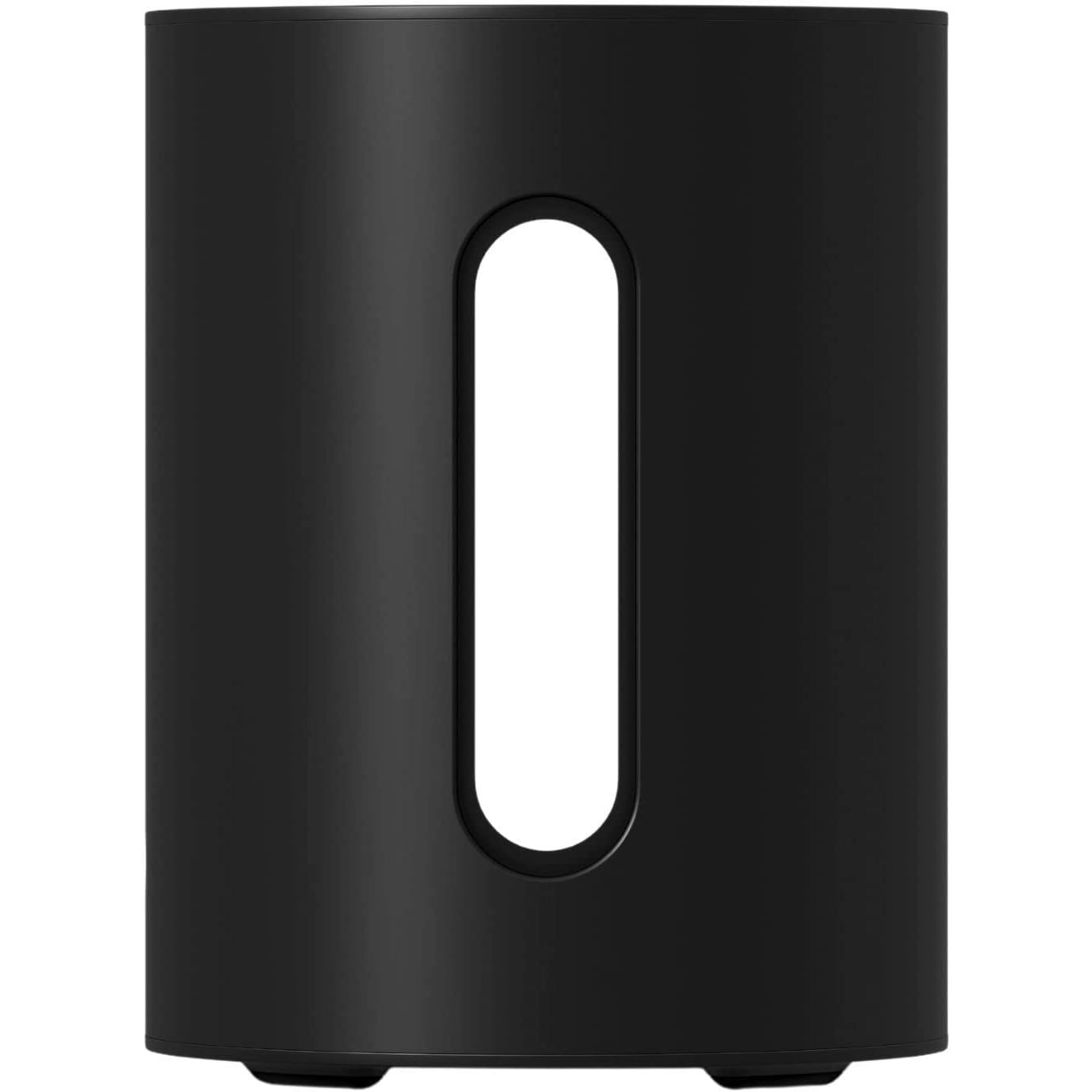
Sonos Sub Mini
- Impressively big-sounding for the size
- Easy setup and use
- No worrying about sending crossover frequencies, etc.
- Matte finish is nicer than the glossy finish on the Sub (Gen 3)
- Pairs wonderfully with the Sonos Beam (Gen 2)
- Only works with Sonos devices
- Cylindrical shape makes it tough to fit in certain spaces

